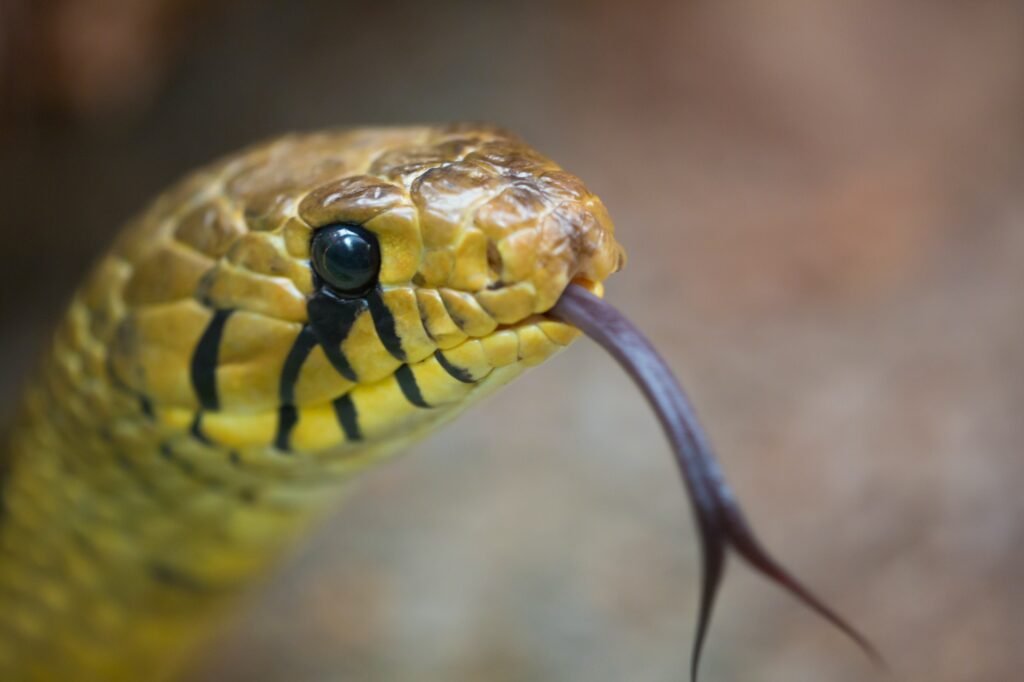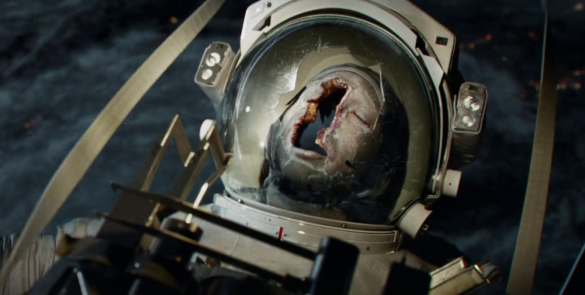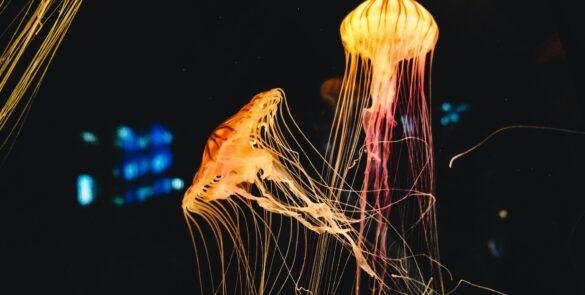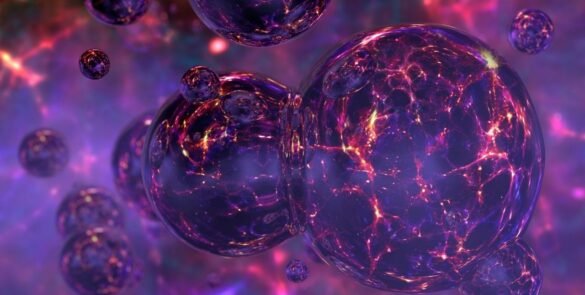How Do Animals See The World? Science Behind Vision
- Team WOS
- 10 Mins Read
How do the animals and birds view the world around them? Do they perceive everything just like a human? Watch this video for better understanding!
We have gone through millions of years of evolution during which different body parts of animals have been developed or vanished. Humans were not using the tail; they don’t have it now while our ancestors pretty much relied on their tails to climb tall trees. Every little part of the body has a million years of history and among them, our eyes have certainly a prime position. It is one of the 5 sensory organs and it helps us visualize the world around us. But the world as it appears is not completely true to its original state.
The distinction between what things appear and what exists in a natural state is a debate going on in many fields ranging from biology to metaphysics. The science of vision is simple to understand. Light from objects gets reflected and enters our eyeballs. These lights converge together through a biological lens and form a real and inverted image on the retina present in the backside of the eyeball. The retina is a light-sensitive portion of the eye and contains two types of cells: Rods i.e. light-detecting zones and Cones i.e. color perception zone.
Each cone contains a particular pigment that is sensitive to a certain wavelength of light and thus we see a color associated with that wavelength. A rose appears reddish pink because it consists of a compound called anthocyanin that reflects red light in abundance. But that does not mean that every animal will see the color of the rose as red. This is where our topic for today starts. How do the animals and birds view the world around them? Do they perceive everything just like a human? Let’s understand the basic anatomy of the eyes of a few animals.
Dogs
Let’s start with the favorites. We have three types of color detecting cells in the retina namely Red, Blue, and Green denoted as R, B, G, but dogs have only two. Cone cells present in the eye of a dog are specialized to understand the perception of yellow to blue and even UV light. But due to fewer cone cells than humans, they cannot differentiate between many colors. Rods cells are light-detecting cells. They are responsible for detecting motion and vision when there is low lighting conditions.

Dogs have dichromatic vision, which means they see violet-blue, yellow and shades of grey.
One advantage they have over us is that their eye arrangement places their two eyes at an angle of 20 degrees and this increases their field of view. In general, they have an eyesight of 20/75 which means they have to be 20ft from an object to see them as well as a human will see that object standing 75ft away.
Snakes
Let us move to the creeping Slytherins. They have poor eyesight and they make use of their bifurcated tongue to get a sense of the surrounding environment. They do not have any eyelids to protect their eyes but a transparent scale-like structure that covers and gives protection. It is known as a spectacle.

Snakes have infamously poor eyesight, which is why they resort to sticking out their tongues all the time to get a sense of their surroundings.
Like dogs, they too are dichromatic, meaning they only have two color cells i.e. B and G. Their eyes are also sensitive to the UV lights and hence allow them to see clearly in low light conditions. As the amount of UV light is dominant during the day, the predators that are active in the day have a special filter built to filter out the harmful UV lights. They also make use of Infrared signals to locate their targets. Particularly Vipers, Pythons, and Boa use these infrared lights at a wavelength of 50 nm to 1 mm.
So, like dogs, they too have a less colorful world and they use the extra feature in their senses to map the surroundings. Their vision is very poor, and even using all the arrangements they can make only the perception of the approximate shape of the objects lying around, not their complete detailing.
Lions
The kings do not have a better view of the world either. Well better than snakes but quite similar to others. They too have fewer cones, so they also view less color but they have a great night vision and hence they hunt primarily at night. One special feature that allows greater vision at night is the presence of an extra membrane in their eye that concentrates reflected light back to the retina, thus allowing more light to enter and giving more exposure to the image formed on the retinal background.

Lion’s eyes are quite large with round pupils that are three times as big as a human’s
Also, their pupils can enlarge to a much larger extent than other animals, allowing enough light to enter and produce a clear image.
Rod cells that are light-sensitive cells have more presence than the cone cells and they are packed in a very high concentration in a sensitive area of the retina known as the Fovea. This gives an advantage to the lion in comparison to a man. They only need 1/6th of the light needed to see an object and thus even on dark new moon night, they can see the image clearly.
Their eye size is large, approximately 3 times bigger than ours. Their eye arrangement makes it impossible to move their eyes side to side so they have to move their whole head to get a view of the surroundings at extreme angles.
Elephants
These big guys of Africa and Asia have poor vision and they can only see an object clearly up to 10-20m. These were a certain disadvantage for them on the battlefields. But this short vision is fulfilled by excellent hearing and a sense of smell. Their head is massive but the average size of their eyes is only 3.8 cm. An average human eye is 2.5 cm in diameter. Also, their eyes are located on the two sides of their heads.

Elephants are colorblind. They have one type of cone for red and another for green. Elephants can see similarly to colorblind humans.
This, like dogs, gives them a very good peripheral vision and has a wide field of view. They too have only two color cone cells. They can see blue and yellow and cannot differentiate between red and green. At night they are sensitive to blue and violet light and thus making it easier for them to see in less lighting conditions. One interesting fact about elephants is that they are born blind and only develop their eyesight in a few weeks.
Birds
Okay, the last ones are descendants of dinosaurs, the Avians. They have superior vision when it is related to color perception. They are tetrachromatic meaning they have four cone cells i.e. R, G, B, and UV. This gave them a certain advantage even over human beings. Pigeons are very good at color perception and thus they were used for search missions in ancient times. Birds have the largest eye to body size ratio in all beings. The birds of prey like Eagles have a very large concentration of receptor cells and those who fly during nights have a much higher number of rod cells than cone cells.

As birds are tetrachromats, they see four colors: UV, blue, green, and red, whereas we are trichromats and can only see three colors: blue, green, red.
Their eye arrangements are similar to that of reptiles. This is one of the results of evolution. Like lions, they too have to rely on head movement but some of them have such a wide range of views that head movement is rarely required. Parrots and Pigeons have a field of view of around 300 degrees. American woodcock has a field view of 360 degrees horizontal and 180 degrees vertical. Thus, birds have the upper hand when sightseeing is concerned.
Vision plays an important role in the survival of organisms and this system ranges from being very complex to simple in different organisms in different periods. A dragonfly has such a fast brain that it perceives everything going around them in slow motion. Insects have thousands of small eyes compounded together to view the 3-dimensional world. Every organism views the world according to its biological perspective. Every organism creates its perception of the world.
What are your thoughts about the different vision types in animals? Let us know in the comments.
Share this article
Team WOS
Share this article
Richelle GoodrichReality depends a great deal upon one believing what he sees—or seeing what he believes. Either way.
Latest posts
We have learned many partial truths and some remain with us even when we are studying higher courses. Let’s look up such partial truths that are very common...
What will the conditions be for the human body in space? How much difference a human being would feel while being in space? Space is scary and lonely, and conditions are...
Here is a list of the best science books that'll take you deep into the ocean of science. Books fueled the mighty revolutions in human history and produced...
World's most renowned scientists think that the cosmos has quantum consciousness. First of all, what exactly is consciousness? Scientists are actively engaged experimental tests of these ideas. One approach is to study brain-impaired patients to see if their information...
Trending Articles
The animal kingdom has evolved from unicellular organisms to gigantic dinosaurs and intelligent social animals, like us, Human beings! Throughout this evolutionary history, different species have left some characteristics or gained something new depending upon
The universe is filled with breathtaking views, shiny stars, glowing galaxies, pulsating magnetars, dark wandering planets, and whatnot. Let us take a trip to some magnificent and best travel spots in the solar system.
We have learned many partial truths and some remain with us even when we are studying higher courses. Let’s look up such partial truths that are very common...
How did the universe begin? Let’s dive deep into the origin of the Universe and the weirdest theories about it. For example, let’s go to ancient Greece. From...
Is Pluto a planet or not? The debate over its classification rages on, with some scientists advocating for a return to its original status. The controversy over Pluto's planetary status raises larger questions about how we define and categorize objects in space
We have explored only a few percent of Earth but what if we could somehow reach the center of the Earth? Today let’s go on a Journey To The Earth's Core. The underworld has been in the imagination for many centuries — be it a place of hell or the afterlife, or a place from which future heroes will...












